Understanding The Customer Psyche, Maintaining personal touch
- By PP Parera
- April 19, 2022

Innovation, similar to communication, which I touched on in the previous issue of Tyre Trends, is a somewhat elusive subject as far as modern organisations are concerned. My intention here is not to delve into the subject’s intricacies but to share my experiences and views with the readers.
I do not know if I am the best person to touch on customer psyche from a marketing perspective. However, on thinking widely and looking at the big picture, I feel I am not very far from the truth that we are all engaged in putting our ideas across and understanding, or very often misunderstanding, relationships and dependencies throughout our lives, be it in family or social and business circles. In other words, we are marketers in the sense that we seek agreement to our views and expect a positive response from those with whom we associate. The Buddha, in one of his discourses, has indicated that the world depends 100 percent on relationships. This is equally applicable to all phenomena in nature, including human relationships. The quality of the relationships is the key determinant of the success or failure of the quality of any human activity. On thinking broadly, quality is a rather evasive term with a wide variety of interpretations, reminding us of the proverbial ‘seven blind men and the elephant’.
My experience with the ISO certifications naturally prompts me to seek information from the ISO standards. A widely accepted and general definition of quality is the level to which requirements are fulfilled. According to the ISO 9001:2015 QMS, the customer requirements are broadly categorised as: (a) stated requirements, (b) implied requirements and (c) compliance obligations dealing with statutory and regulatory, and other legal requirements. Requirements stated by the customers are apparently straightforward but may need careful evaluation, while the implied requirements need to be invariably derived using the available information and the experience of the supplier or the manufacturer.
At the very beginning, the ISO 9001:2015 standard gives top priority to understanding the context of the organisation, which takes in to account the external and internal issues as well as the expectations of the external and internal interested parties while assessing the business risks and opportunities associated with the same. It is rather discouraging to note that many companies do not pay the due attention to Clause 4.0 in their quality management systems.
The concept of ‘internal customer’ is another important area that is apparently taken for granted in many companies despite the complex dependency and the independency between the processes and the process owners. The several ‘meetings’ that the managers are frequently engaged in – to the level of becoming a malady – could be the outcome of not paying attention to the ‘internal customer’. Habits 4, 5 and 6 of Stephen Covey’s ‘The 7 Habits of Highly Effective People’, namely Think Win/Win; Seek First to Understand, Then to Be Understood and Synergize, can be of valuable guidance in interpersonal relationships. Not understanding the requirements of the ’internal customer’ or the next in line in the value adding process has created closed domains and ivory towers within organisations.
As I have mentioned in one of my previous articles, ‘social distancing’ cannot be considered as post-Covid addition to our vocabulary. Its origins can be traced back to the post industrial revolution, when the traditional craftsmanship and cottage industries gave way for mass production system, which simultaneously resulted in mass de-personalisation. Individual craftsmanship was the norm in my native village in Sri Lanka (then Ceylon) in the fifties. I presume that some of the surviving ‘baby boomers’ can recollect similar experiences in their own countries. Pride of ownership and personal reputation were considered in high esteem – sometimes even at the expense of a little extra profit..
Notwithstanding the tremendous benefits accrued by way of increasing the agility and responsiveness with tools and conveniences of modern communications in the modern organisations, the distancing of relationships has introduced new problems. The importance given to the ‘personal touch’ appears to be the hallmark of an extinct species.
On the same lines, I remember an episode from my days in Nairobi, Kenya in the early nineties, how the owner of a well-known chain of hotels got his Harvard MBA son to work in a hotel kitchen as his first job and set a practical example of humanely understanding the customer psyche. Similarly, when I joined the Bata Shoe Company in 1969 as a management trainee, the first training we were given was to work in the retail shops for one week, irrespective of whether we are going to end up in marketing, purchasing, finance, technical or quality control. I still possess the leaflet we were given on the first day we joined the company, the contents of which goes as follows:
WHO IS A CUSTOMER
• A customer is the most important person ever in our business…in person or by mail.
• Customers are not an interruption to our work…they are the purpose of it.
• We are not doing them a favour by serving them…they are doing us a favour by giving us an opportunity to serve them.
• Customers are not dependent on us…we are dependent on them.
• A customer is not an outsider to our business…but a part of it.
• Customers are not cold statistics…they are flesh and blood human beings with feelings and emotions like our own, and with biases and prejudices.
• A customer is not someone to argue…and match wits with. Nobody ever won an argument with a customer.
• Customers are people who bring us their wants. It is our job to handle them profitably, to them and to ourselves.
Honestly, I should say that as a freshly joined management trainee in 1969, it took me many years to realise the implications of these time-honoured pearls of wisdom about interpersonal relationships. With the proliferation of online sales and e-marketing, the customer has become an obscure or virtual figure or a non-entity. Going to the bank and exchanging greetings with the counter clerk or having a friendly chat with the vegetable or fruit vendor down the street is a thing of the past and a luxury which only a few retired persons like me can afford to enjoy.
Voluminous studies and research have been done in the past from the time the human relations approach to management which started about 100 years ago. It is still an area that the modern day management thinkers, CEOs and specialists of the many disciplines related to human behaviour are grappling with. New theories and hypotheses are continually emerging. The modern managers are very often overwhelmed by the challenge of discerning the trees from the forest, and I am aware about two companies in my own country that were duped by ‘marketing experts’ – to spend millions on magnanimous customer relations programmes which proved to be failures.
Customer satisfaction is a requirement of performance evaluation under Clause 9.0 of ISO 9001:2015. Some companies have developed rather intricate quantitative methods to evaluate customer satisfaction. Poor response rates are a common trend unless the products or the services are of a high level of importance and the consequences of failures are catastrophic. The cost of not fully comprehending what the customers want can be high and the consequences can sometimes be disastrous.
The behaviour and body language – the genuine vs the artificial smile – can be easily spotted. It could be the glittering front office of a large multinational company or an airline check-in counter or the flight cabin itself. Or it may be a small kiosk or a boutique in a remote village. The underlying principles are the same. The courteous, patient and the enduring etiquette of the saree vendors in many parts of India and the remarkable business success of some minor communities in Sri Lanka provide good examples of staying close to the customers.
Customer satisfaction is the extent to which we strive to meet the needs of the customers. However, the way the modern market promotion and advertising is continuously striving to create new needs and wants with only the financial bottom-line as the supreme priority makes me wonder if we have a ‘hen and the egg’ situation in modern business. It was Mahatma Gandhi who once said, “The world has enough for everyone's need, but not enough for everyone's greed.”
According to a recent market study, some common pitfalls of poor customer experience are enumerated as:
a) Rushing it
b) Losing focus
c) Assuming satisfaction, loyalty, advocacy is the same
d) Letting the stakeholders to influence the customers
e) Making rash decisions
f) Comparing apples to oranges
g) Keeping it as a secret
h) Ignoring the data
i) Thinking short term
j) Standing still
Some important aspects to be considered in understanding the customer behaviour have been identified as follows:
• Marketing positioning and distribution
• Personal factors such as age, gender, education and upbringing
• Psychological factors such as buying motives, perceptions and attitudes
• Situational factors such as physical surroundings, social surroundings and time factor
• Social factors such as social status, reference groups, social media and family
• Cultural factors such as religion and ethnicity
• Lifestyle factors such as status, income and identity
• Geographical factors such as the country, religion, urban or rural
With all due respect to the modern approaches to understanding the customers, I find it opportune to cite a far-reaching teaching from the Buddhist doctrine which has deeper management implications on interpersonal relationships. Once the Buddha noticed a young person called Sigala, from an affluent Brahmin family, worshiping reverently at different directions after having his ritualistic bath at the Ganges. It was found that he was following the death wish of his late father. The Buddha explained to him the real significance of the six directions of worship, which is a lesson for the modern managers on harmonious interpersonal relationships. The discourse covers in great detail the duties and responsibilities of the different stakeholders of the social fabric, namely:
• Parents-children
• Students-teachers
• Husband-wife
• Friends and associates
• Employer-employee
• Individual-religious fraternity
It can be seen how these interactive factors cover every aspect of our lives on a life course approach, irrespective of geographical, national, social and religious boundaries, in a world made complicated by our own ambitions and actions.
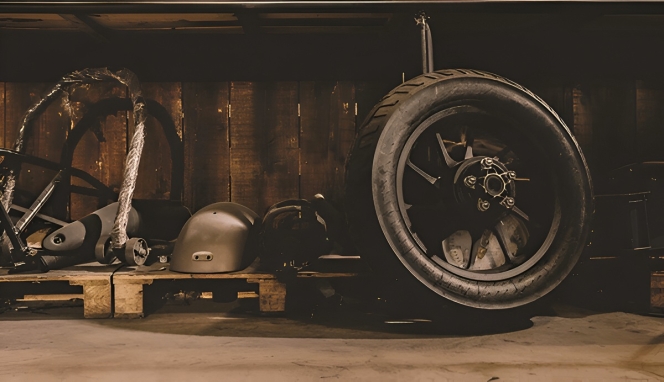
Fifty-seven years ago on 1st September 1968, I joined the rubber products manufacturing industry in Sri Lanka (then Ceylon) as a trainee in a medium scale footwear company. The only knowledge or rather awareness I had of rubber until that time was seeing the tapping of trees, adding a pungent liquid to the milky liquid, put on metal trays, squeezing the whitish slab of material through two rotating metal rollers manually rotated by a crank and putting them in a smoke shed that was available in some backyards to end up with a striped brownish sheet of rubber, which I later learnt was known as RSS. Later, in the early sixties, during our Organic Chemistry lessons, we learnt that C5H8 is the formula for Isoprene, which is the building block of natural rubber. Going down the memory lane of the past 57 years of knowledge acquisition in the rubber industry might turn out to be an exhaustive exercise. However, it is my sincere hope that some of my experiential insights might help the modern-day managers to seek areas that may strengthen their foundations in this era of rapid shifting sands.
I should say I am at a loss in finding an appropriate definition of knowledge from the vast interpretations which appear to be too academic. One practical and easy to understand definition I have come across in that knowledge is the ability to understand, apply and transfer information and experience to solve problems and adapt to changing circumstances, Merely the possession of facts is meaningless. It is the skill of using them effectively for survival, development and progress that is more important. It reminds me of the many research findings and innovations that are gathering dust in many institutions. In the case of early humans, knowledge emerged through direct observation of nature, trial and error and sharing same with groups. In my opinion, the context has virtually been the same over the ages, although the scope and the contents have undergone drastic changes during the course of human history, particularly through the four industrial revolutions and apparently heading for an unprecedented and a somewhat incomprehensible future.
If I am asked the question how I have acquired knowledge during my working life, I would say without any hesitation that it was through a process of osmosis. Those who studied botany under the biological sciences may perhaps vaguely remember how plants absorb water, minerals and other nutrients from the surrounding soil through their root systems by the process called osmosis. In a similar manner, we also acquire knowledge from the external environment through our sense facilities, namely the eyes, ears, nose, tongue and the skin, and through perceptions, which are processed by our brain and the central nervous system. The Buddhist doctrine gives a clear description of this process, which are well in line with the biological and physiological sciences. I, however, would not wish to go in to a philosophical deliberation at this point of time. Knowledge acquisition is a lifelong process with the ‘cradle to grave’ concept, and according to the modern scientific findings, starting at the moment of our conception in the mother’s womb.
I would now endeavour to delve a little into the knowledge acquisition modalities available to us trainees during our formative days of the career in the rubber industry from the late sixties onwards. The modern rubber technologist (if the term is still in use) may perhaps find them archaic as if they are viewing the archaeological remnants exhibited at a museum. It was hands-on experience from the beginning in what was termed a 3D industry, namely dirty, difficult and dangerous. This was mainly due to the particulate and dusty nature of the various fillers used such as carbon black and the toxicity of the rubber chemicals, coupled with the usage of high energy consuming motor driven machinery, both electrical and heat, usage of steam and compressed air, emission of high noise and vibration, fumes and high material load in some industries such as tyre manufacturing and tyre re-treading. The complexity and diversity are further aggravated by the macromolecular nature of both natural and synthetic rubber, which necessitates the somewhat illogical steps of breaking and remaking using a vast array of heterogeneous raw materials to facilitate the processability and for achieving the performance requirements of the products, some of which are of highly composite nature. As a consequence of the above, rubber product manufacturing industry was not at all the preferred choice for young school leavers like me. Hence, my entry into the rubber industry was due to the pure necessity of finding employment. However, the practical involvement with the identification and weighing of the multitude of rubber raw materials somehow had its attraction for me, which prompted me to read the limited number of text books and supplier literature that were available at that time. The real turning point in my career in the industry was the opportunity I got to follow the two-year part-time course at the then Ceylon College of Technology (now a university) to study for the Licentiate of the Institution of the Rubber Industry, LIRI (UK). This was equivalent to a full time BSc today. We were very fortunate to have three well-respected and dedicated teachers of the day in our quest for the acquisition of knowledge. Teaching was a noble profession for them, and I am very proud to state that their photographs adorn the entrance to the auditorium at the Plastics and Rubber Institute of Sri Lanka, where I joined as student in 1969 and ended up as its President for the year 2024.
Another remarkable feature during those days came in the shape of representatives from well-reputed giants in the raw material manufacturing companies such as Bayer, ICI, Monsanto, ACCI Rhien-Chemi and Polysar, names which to my knowledge are not existing now, or may be as mergers. These were invaluable opportunities for us the young technologists to gain the technical knowledge and discussion about the technical problems. The short technical sessions conducted by some of them in the evenings were eagerly awaited occasions during our days to share knowledge over a cup of tea. I am a little puzzled whether some of the similar events conducted online as webinars have the same effects or if at all that personal rapport.
The Bayers Technical Programme conducted annually at Thane, India, during those days was another avenue for gaining very valuable theoretical and practical knowledge, and I was fortunate to associate with prominent professionals such as R R Pandit, who left this world a few years ago, and Dr S N Chakravarthy.During my working with the Bata Shoe Company of Ceylon for 12 years, I had the opportunity to represent the company at a few of the Regional Technical Meetings held in the Far East. These were invaluable platforms for sharing knowledge and information of the technical developments of the individual companies. They were also enjoyable opportunities for networking and building up some lasting relationships. After following the programmes, it was compulsory that we give a presentation to the management and staff about our learning experiences, and more importantly, to plan development activities, the success of which was one criterion for our individual performance evaluation. Knowledge by itself is not power unless it is shared – a truism that will not apply to politics and the intelligence services. I well remember the case in a place I worked later about how some staff members who were sent to Japan for training deliberately skipped sharing what they learnt at company expense with the fellow staff members despite the several reminders.
As a passing remark, I may mention that my period of working in the tyre retreading and rubber products manufacturing companies in Kenya (for about 14 years) offered me the good opportunity of working with multiethnic communities while imparting my knowledge to train and develop staff members.
Now, coming to the global rubber product manufacturing, it can be seen that the focus on mixing, curing and reinforcement knowledge requirements has expanded into a multidisciplinary portfolio over the past 50 years, and the quest will continue. It is not prudent to do comparisons as ‘now and then’ because knowledge acquisition and its management is heavily dependent on the needs and requirements at any particular era or period of time. Unlike in our generation, a vast knowledge base, which is sometimes bewildering, is available at the touch of a fingertip for the modern-day managers, and apparently, most of it is related to their work and operational activities. My discussions and chats with many managers reveal the fact that they are overburdened with their daily activities and are working at different stress levels. They seldom seem to have any time or opportunity to integrate their work with the core values such as respect, gratuity and empathetical understanding.
The famous quote of Sir Issac Newton comes to my mind at this juncture: “If I have seen further, it is by standing on the shoulders of Giants.” He wrote this statement in a letter to Robert Hooke in February 1675, acknowledging that his own scientific discoveries were built upon the work of his predecessors, a sentiment that symbolises humility and scientific progress.
Knowledge and discipline go hand in hand. How to use knowledge appropriately needs discipline to comprehend. The consequences of using knowledge for the sake of knowledge, purely for application to industry, without giving due recognition to humanity and our core values is surfacing rapidly at the cost of trust, wellbeing, harmony and human development in every aspect of human activity, both locally and globally. In this respect, I remember the famous line from the poem, The Rime of the Ancient Mariner, by Samual Taylor Coleridge, which we happened to study in our literature class a long time ago.
‘Water, water everywhere and not a drop to drink’ illustrates the irony and anguish of being desperately hot and thirsty whilst being surrounded by nothing but ocean.
The author is a Management Counsellor from Sri Lanka.

Service is being there to assist the client to experience less lost profit. Some may say pain; obviously, of the financial kind and not physical kind.
Navigating life’s challenges becomes considerably more complex when a flat tyre comes into play. Preferably first thing in the morning, as the tyre’s lost its pressure over night. The tyre wasn’t capable of delivering its usual level of service when you required it to do.
A tyre service delivery has the client’s wellbeing in mind when managing the usually large asset for a fleet operation that is known as ‘TYRES’. From initial selection through procurement service and end of first life, decisions are required based on experience, knowledge and data. Supply alone cannot support such an operation requiring service to monitor, measure, maintain and manage tyres in operation. In a round the clock operation, tyres don’t just operate on one shift.
Electronic surveillance is becoming part of daily life, no different for tyres. Uninterrupted service, but can you can stay awake long enough?
What has changed is the service a tyre now receives from tyre pressure monitoring. Operating at the appropriate pressure, a tyre can deliver the highest level of service it is capable of. The service provider now becomes the service receiver. Indeed, both are becoming the service controller with the delivery of smart tyres. The tyres provide service to the control systems of the vehicle, updating on current conditions and even considering what is to be experienced based on what the tyres are feeling, just as a human does, in delayed response.
THE SERVICE LOOP CLOSES.
Good service always should breed trust and respect and so loyalty. Unfortunately, sometimes prices come into play. As our industry knows only too well, quality is never (ever) low cost. If it’s too good to be true, it probably is. Is your (or someone else’s) life worth a fist full of money? Bean counters have a lot to answer for when it comes to tyre operations.
Service is supporting your client to assist them to generate a profit. Would you turn away someone who helps you make money? So how do we assist to reduce the pain point? Real-time tyre pressure monitoring, know the issue before it becomes a problem, before the hazard threshold is crossed. With ease data can be streamed in real time. A tyre service centre is able today to alert a fleet operator that a tyre is in need of attention, before the situation develops into a catastrophic tyre failure. The nearest service facility can be alerted, the vehicle with the problem tyre already known to the service facility is attended to and returned to service. The service loop closes again. The tyres assist you making a profit, ergo a service provider.
Someone or something that makes my life better is to me a service provider. I consider that a reflection of the trust a client invests in their supplier to be a prime indicator of the level of service that is utilised. There are times when service is ridden rough shod over as price becomes the primary driver. Service suffers, returns from the tyre operations fall as tyre costs rise, though more importantly, machine availability drops. Remember, the sweet low price is long forgotten when low quality is found.
What is your level of service to your clients? Will they return to you or go looking elsewhere?
Our tyres rarely complain and endure the harsh conditions we ask them to operate in, without attention and generally without any care.
Remember the level of service your tyres provide to you and yours. Can you emulate this level of service provision to your clients, friends and family?
Take care, stay TyreSafe!
Driving Forward Through Uncertainty
- By Rajiv Budhraja
- September 04, 2025
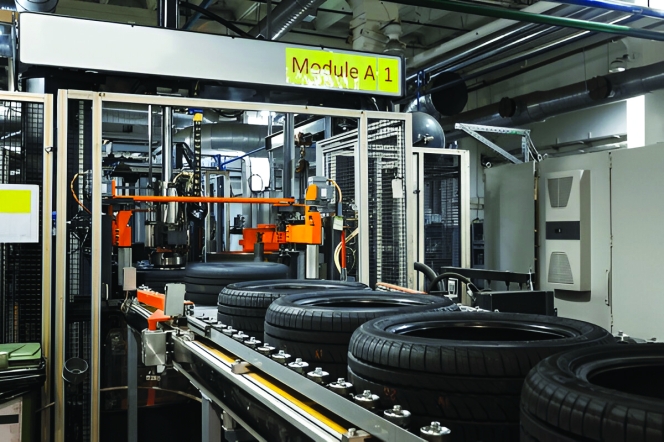
The past few years have not been easy for Indian industries. From post-pandemic recovery and supply chain issues to trade policy shifts and geopolitical conflicts, businesses across sectors have been navigating uncertainty. Yet, amidst this turbulence, the Indian tyre industry is emerging resilient – steadily carving out a global presence and positioning itself as a poster boy of India’s manufacturing story.
In the last one month alone, three developments have highlighted the strength, adaptability and future-readiness of the Indian tyre sector. Together, they offer a glimpse into an industry not only responding to challenges but also reimagining the road ahead.
Despite rising protectionism and the lingering aftershocks of disrupted global supply chains, Indian tyre exports have continued their upward march. In the last fiscal year, tyre exports from India have grown by nine percent year-on-year – a clear indication of global confidence in Indian-manufactured tyres. Tyre exports from India reached INR 250.51 billion compared to INR 230.73 billion in the previous fiscal, as per data released by the Ministry of Commerce, Government of India.
This isn’t just a story of volume. It’s a story of credibility – built on strong domestic manufacturing capability, world-class quality standards and a heightened focus on research and development.
Today, Indian manufactured tyres are competing with the best on parameters of performance, durability and cost-efficiency and providing a value proposition difficult to match. Indian tyres are exported to over 170 countries, with significant presence in the United States, European Union, Latin America and Southeast Asia. The US remains the top export destination, accounting for 17 percent of India’s tyre exports by value, followed by Germany (six percent), Brazil (five percent), UAE (four percent) and France (four percent).
With an estimated annual turnover of INR 1 trillion and exports exceeding INR 250 billion, the Indian tyre industry stands out as one of the few manufacturing sectors in the country with a high export-to-turnover ratio.
This export momentum has been further facilitated by the government’s active support in promoting domestic manufacturing through Make in India and other export-enabling reforms.
Perhaps nothing captures the maturing of the Indian tyre industry better than the recent global rankings by Brand Finance, the world’s leading brand valuation consultancy, which features four Indian tyre manufacturers – MRF, Apollo, CEAT and JK Tyre – among the world’s 15 strongest tyre brands. In fact, MRF, with a Brand Strength Index (BSI) score of 83.5, ranks as the third strongest tyre brand in the world after Michelin and Goodyear, according to the Brand Finance report.
This is not mere symbolism. It reflects decades of effort in building product trust, expanding global footprints and investing in brand equity. From high-performance radial tyres to off-the-road solutions, these companies are not just making tyres – they are shaping mobility experiences across geographies.
If the present is promising, the future looks even more exciting. A Vision 2047 report by PwC forecasts a CAGR of 11–12 percent for the Indian tyre industry over the next two decades. That is not just encouraging – it’s transformative.
This projected growth rides on several powerful drivers including rising demand from rural and semi-urban India, rapid growth in two-wheeler and commercial vehicle segments, a paradigm shift towards electric mobility and smart transport, greater OEM activity within India as global players deepen their localisation strategies and government policy support that encourages domestic production and discourages non-essential imports.
It’s also a growth that aligns with national priorities – self-reliance, sustainability and job creation.
India’s tyre industry is no longer playing catch-up. It is setting benchmarks. It is innovating, expanding and winning trust in markets around the world. It is making bold bets on sustainability, supply chain resilience and digital transformation. Tyre manufacturers in India have collectively invested nearly INR 270 billion over the last 3-4 years. These investments, spanning both greenfield and brownfield projects, highlight the industry’s confidence in India’s long-term growth potential and the industry’s commitment to capacity expansion and technological advancements.
As we steer towards 2047 – India’s centenary of independence – the tyre sector stands ready to play a pivotal role in the journey. One that connects not just places but aspirations.
Rajiv Budhraja is Director General of the New Delhi-based tyre industry association, Automotive Tyre Manufacturers’ Association (ATMA).The views expressed here are personal.
Engineering Giants: OTR Tyres… The Science Behind Extreme Performance
- By Ertugrul Bahan
- August 15, 2025
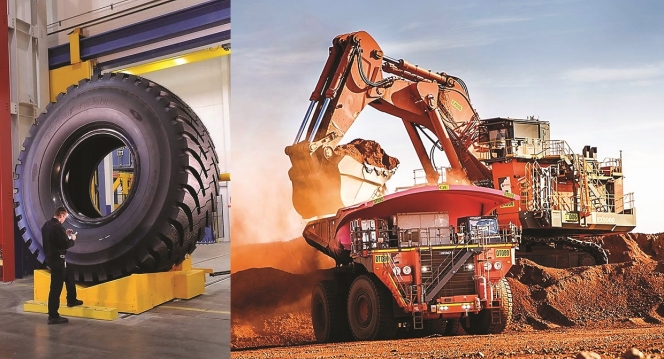
OTR tyres, rugged design and advanced technology that withstand the most demanding conditions... From mining to construction, these giant tyres play a critical role in keeping industries running smoothly.
What does the term ‘off-road tyre’ mean to us? Giant, robust, special and imposing – a tyre for heavy-duty vehicles. While there are already some tracked loaders and cranes on the market, stationary work, excavation, loading and transport are carried out with mobile machinery in open-pit mines or on heavy-duty construction sites. Transport vehicles, cranes and large-capacity loaders are always equipped with robust and durable rubber tyres. The last 50 years have seen a true revolution in the off-road tyre segment, as tyres have become larger every decade. Newer dump trucks have higher load capacities, requiring the installation of larger tyres to meet this growing demand.
Today 3,500-plus hp engine big haulers loaded carriage capacity reaches to 400-plus tonnes equipped with a tyre such as 59/80R63 extra load size. Such trucks are coupled with loaders having a shovel capacity of 60 tonnes on open pit areas. These load capacities are enormous, and the new generation of trucks offers even more. Tyre sizes up to 63/80R63 or some other size combination with low platform and wider dimensions are in the market.
Thirty to 40 years ago, tyre sizes for 50-80-tonne haulers were around 36.00-51 or smaller. Today, we are talking truck carriage capacities of 450-500 tonnes with hybrid engines. More efficient AC electrical drive haulers and having tyre sizes up to 70-inch rim size tyre are on the pipeline. These vehicles will be able to accommodate tyres with a diameter of over four metres, a weight of over 5.5 tonnes and a load capacity of over 120 tonnes per tyre.
High-tensile reinforcement materials and new generation rubber compound technologies play an important role in these revolutionary developments.
Extreme conditions, extreme performance, heat and puncture resistance for uninterrupted operation... This is how OTR tyres master harsh environments (quarries, mines, construction sites).
Tyres for open-pit mining, underground mining and construction remain separate categories. Their dimensions and basic requirements also vary. However, load capacities and the number of autonomous structures with electric motors and ultra-wide tyres are steadily increasing. The use of advanced materials in self-monitoring tyres with integrated pressure and wear sensors will become more widespread. Giant radial tyres for electric vehicles will proliferate on the market.
Tyre demands for extreme load-bearing capacity, improved cut and tear resistance (against sharp, abrasive stones) and improved heat dissipation through deep tread patterns will increasingly prevail, in line with customer demands. While the tread depth of off-road tyres was only 50 to 60 mm in the 1970s, today’s deep-tread off-road tyres reach 100 to 110 mm. Radial construction with new compound and heat dissipation technologies enables off-road tyres with deeper tread patterns, which also represents a significant advantage for the circular economy. Low-temperature off-road tyres also offer higher and multiple retreadability.
Both bias-ply and radial off-road tyres face significant challenges such as heat, abrasion, traction, sidewall cuts and fire protection. Although current off-road tyre technology has advanced significantly compared to earlier radial off-road tyres, some brands use bias-ply reinforcement layers, primarily on the sidewalls or tread, for improved cut resistance. Bias-ply off-road tyres remain preferred for certain applications, particularly forestry and some mining tyres.
Titan International (USA) underscores its strong presence in the truck tyre market with its Mining & Construction Bias division. This underscores the strategic priority of these specific applications in the OTR tyre market. In the US, Titan focuses on cut-resistant compounds and special tread patterns for rock environments that perfectly meet the most stringent performance requirements of bias construction.
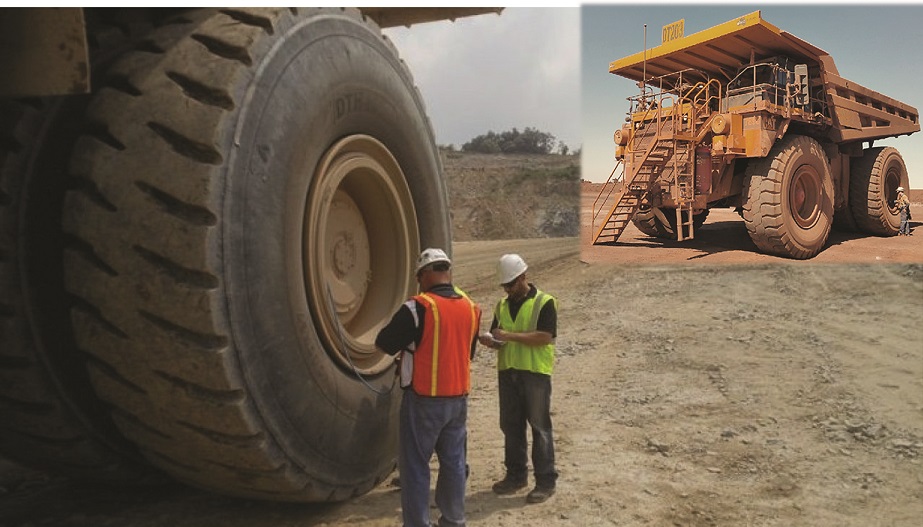
Michelin, Bridgestone and Goodyear dominate the OTR tyre market, with demand varying regionally. Large tyres for mining, underground mining and construction require durability, heat resistance and smart technology to meet the changing needs of the industry.
Michelin, Bridgestone and Goodyear dominate the global OTR tyre market, but Continental and BKT are also important players. Titan, Yokohama, the Chinese company ZC Rubber and the Indian company Apollo are other niche players that could disrupt global markets with more affordable alternatives. Furthermore, regional demand varies considerably between Asia, North America and Europe due to different mining, construction and regulatory environments. This benefits the different brands, whose combined commercial and technological strengths differ.
Michelin, Bridgestone and Titan (North America and Australia) produce giant mining tyres up to 63 inches wide. BKT, Apollo and ZC Rubber produce low-cost mining tyres in Africa, Latin America and India. Michelin and Bridgestone generally offer smart, autonomous tyres in North America and Europe. Yokohama and Continental (Japan and Scandinavia) offer underground and speciality tyres.
For open-pit mining, powerful electric-powered dump trucks and wheel loaders will offer exceptional load-bearing capacity (over 100 tonnes per tyre). They feature cut and chip resistance (against sharp, abrasive rocks), heat dissipation and a deep tread pattern, which will become increasingly popular.
Underground mining vehicles with narrow low-profile tyres and dump trucks (LHD), on the other hand, will be equipped with compact, fire-resistant low-profile tyres. Their low flammability, puncture resistance and high manoeuvrability will also be important criteria.
Large Scale Construction vehicles like massive dozers, graders, dumpers, articulated dump trucks and motor graders will need high traction tyres for both mud and loose surfaces with reinforced sidewalls to avoid cuts and having high longevity (mixed on road/off road use).
OTR tyre manufacturers compete on durability, profitability and performance. Their primary challenges are extending tyre life, optimising fuel efficiency and reducing wear.
All of the major OTR tyre manufactures need to compete in this high demanding segment of the tyre industry. The biggest challenge in every segment is achieving a long service life without tyre failure. Improved traction and rolling resistance, as well as reduced maintenance requirements, are real advantages.
The cost of a set of tyres is always divided by the total number of labour hours to determine the unit cost per tyre hour. Various parameters influence tyre and other operating costs. To minimise fuel and tyre costs in mines, better road maintenance, operator training in environmentally friendly driving (acceleration/braking), monitoring tyre pressure and loading and the use of predictive analytics (telematics to measure fuel consumption and tyre wear) are essential.
Overloading increases tyre stress, accelerating wear and fuel consumption. Poor road conditions with potholes and spills lead to more cuts and flat tyres, increased rolling resistance and higher fuel consumption. Harsh acceleration or braking always leads to overheating and faster wear. Although large radial-body trucks cost nearly USD 100,000, every preventative measure and maintenance is essential for business reasons.
Innovations such as RFID, flame-retardant compounds and environmentally friendly materials are driving the industry forward. OTR tyre manufacturers compete with specialised designs: mining tyres must be cut-resistant, earthmoving equipment must be durable and port tyres focus on efficiency.
Tyre manufacturers must survive in this highly competitive and demanding industry. Mining tyres are exposed to extreme conditions and require cut resistance thanks to highly abrasion-resistant compounds and additional steel belt layers. Earthmoving tyres require flexibility and durability thanks to all-season tread compounds and rock-resistant designs. Port logistics tyres feature low rolling resistance and chemical resistance thanks to lightweight steel belts. RFID tracking offers real advantages for tyre tracking.
Innovations for niche applications are also essential for brand building and address specific challenges. Some underground mining tyres feature non-marking and flame-retardant compounds for enhanced safety and performance. Arctic tyres require low-glass transition temperature polymers and microspike technology for better traction in extreme cold. As always, off-road electric tyres require improved efficiency and lower noise levels.
The use of recycled materials poses a real challenge for this segment, but more durable designs certainly reduce waste and replacement frequency. However, bio-based compounds and recycled rubber must be more widely integrated into new products.
Key trends in the OTR tyre segment include intelligent monitoring systems, environmentally friendly compounds and improved reinforcement techniques. Graphene-reinforced tyres promise extremely high strength and heat resistance. Sustainability will be a priority in OTR tyre manufacturing, with a focus on reducing environmental impact through innovative materials and designs.






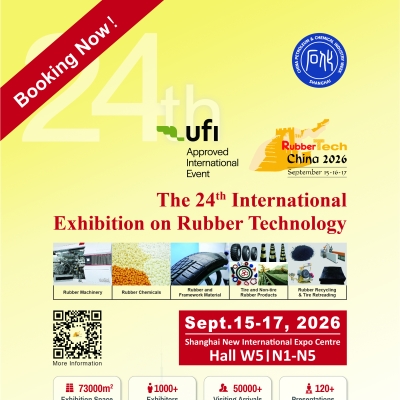
Comments (0)
ADD COMMENT